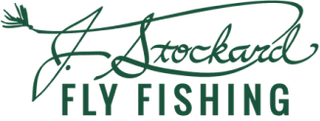Guest Blogger: Mary S. Kuss, Life-long avid angler, licensed PA fishing guide (retired), founder of the Delaware Valley Women’s Fly Fishing Association.
I’m retired now, after lengthy semi-professional career teaching fly fishing and fly tying. It’s been difficult to leave behind the pleasurable work that was my life’s focus for so many years. I still have a strong desire help novices. This is in keeping with a long and honorable tradition in fly fishing. When you’re a beginner, an experienced fly fisher helps you. You, in turn, will hopefully pass it on.
I’ve had a hard time switching off my instructor mode. I always wonder if my fishing friends are happy to have my “help” or wish I would just go away and let them fish in peace. Over the years I’ve often been praised for my patience. Now, as I get older and a bit crotchety, I feel that I’ve become rather short on that virtue. I can only hope that my angling friends and acquaintances will be patient with my impatience.
When I first started teaching people to fly fish I made a lot of mistakes. Perhaps the biggest was falling victim to my own enthusiasm. I wanted to share with my students the newest, latest, greatest thing I’d learned. That was not what they needed, and was often beyond their comprehension. I had lost the beginner’s perspective. I had to take a step back and put myself in my student’s boots, so to speak, and provide basic information appropriate to their needs rather than what currently interested me. Bringing instruction down to a beginner’s level proved to be an unexpected challenge.
The jargon of fly fishing is particularly problematic. Once you learn the terminology, you use it without thinking. I found that it was essential to pay attention to my student’s reaction to what I was saying. When an imaginary cartoon balloon with a question mark in it appeared over their head, I knew that I’d fallen into the fly-fish-speak trap. I needed to stop and explain the puzzling term I had used. This ticked one small item off the list of things they would eventually need to learn.
As a novice instructor, I quickly realized that I had to do more than just show my students how I did things. For a fly fisher at a high-intermediate level, as I was at the time, a lot of key functions have become instinctive. That’s fine as far as one’s own fishing goes. It doesn’t serve well, however, as a basis for providing useful instruction. I couldn’t teach other people my instincts. I needed to know why I fly fished the way I did. I had to be able to diagnose and gently correct the very basic mistakes the student was making. And I had to take a hard look at the methods I used in my own fishing, and whether they were the best ones to teach. Often they were not.
If you are a competent, experienced fly fisher you may blithely assume that since you do it well you can teach it just as well. I’ve worked with many such volunteer instructors, and watched their frustration mount as their efforts to help a student learn to cast failed miserably. As we made our way down a line of students “grass casting,” helping each in turn, I’d often hear one of the exasperated volunteers say something like “Just whip it!” That is not at all helpful.
Once I started my teaching journey, I began to see the flaws in my own technique and the gaps in my knowledge. To be an effective instructor I had to acquire a lot of new information, and develop a comprehensive understanding of the sport. I could not simply brush off the subjects that didn’t interest me personally. Next, I had to distill fly fishing into a teachable suite of essential skills and information that would give my students a good launching point yet not overwhelm them with superfluous detail.
Sometimes I literally and directly learned from my students. I had never been able to tie a Perfection Loop. Spatial relationships were not my strong suit, and trying to learn this knot from diagrams in books was just impossible. All of this was happening at a time before the Internet or even fly fishing videos. For my own fishing, I’d found a work-around for this particular knot-tying deficit. But I felt that loop-to-loop connections were the easiest method for my beginners to learn, and that the Perfection Loop was the best non-slip loop knot for the purpose. When teaching, all I could do was show my students a diagram of the Perfection Loop and admit that I didn’t know how to tie it. Then one day during a weekend school a student said to me, “Is this what you mean?” He quickly executed a perfectly-tied Perfection Loop, having previously learned it in some pursuit other than fly fishing. It was a teaching and learning moment, as the student demonstrated to both me and his classmates how to tie the knot. After that, my knotty problem was solved.
I began to understand that in learning how to teach others I gained a lot of information and knowledge that I would not have if I was fishing only for myself. Teaching was helping me to learn and grow as a fly fisher. I can not overstate the benefits this synergy has brought me.
If you think you might be interested in volunteering as a fly fishing instructor, go for it! You don’t have to know everything, as long as you know more than your student does. And if you keep at it you’ll learn to teach as you go, as I did, and be richly rewarded for your efforts.





